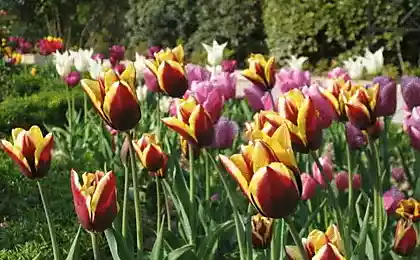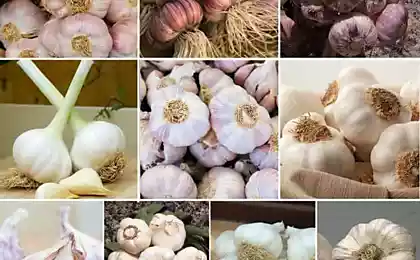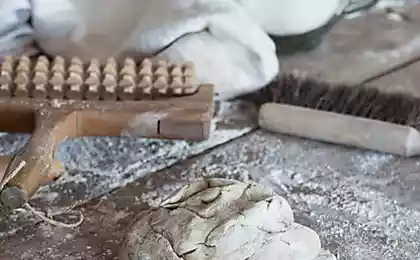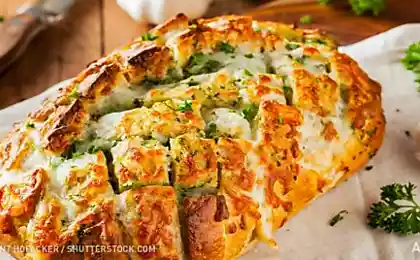660
Flours: decompose "on the shelves"
Modern technology of making flour implies that the grain is first milled and then sifted through a sieve.
The finer the grind, the more "ballast substances" can be sifted.
The most "pure" in this sense, flour is a premium flour.
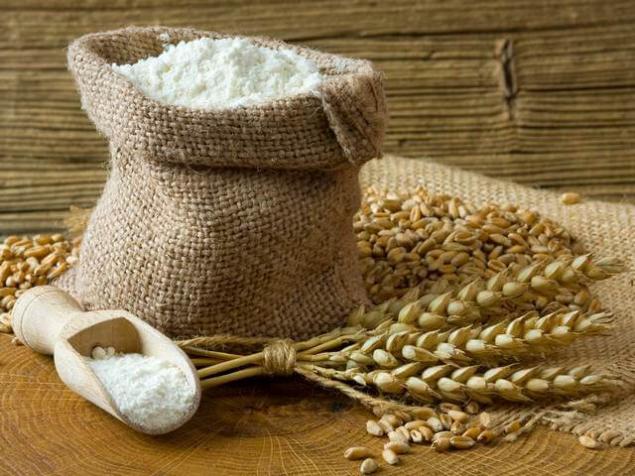
Fine grind allows you to filter out all "impurities", including the flower sheath and grain germ (vitamins, unsaturated fatty acids, minerals, etc.), including the fiber, leaving only the pure starch (carbohydrates).
The nutritional value of this flour (amount of calories) is really very high. But from the point of view of biological value of product is carbohydrate "dummy".
In such flour is nothing useful and necessary to the body. From carbohydrates it can't create new cells, he required all the variety of macro - and micronutrients inherent in the whole grain nature.
MODERN VARIETIES of FLOURtoday modern industry offers 5 varieties of wheat flour:
Varieties of wheat flour differ from one another (the amount of flour obtained from 100 kg of grain), color, ash content, and various degrees of grind (particle size), the content of otrublennyh particles, amount of gluten.
According to the percentage yield of flour from the milling of grain flours is divided into:
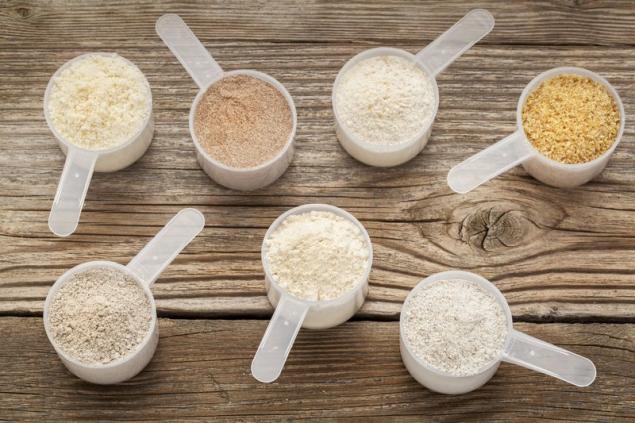

Krupchatka consists of homogeneous fine grains of a light cream color, which are particles of endosperm (Krupki) with size 0.3-0.4 mm, contains shells and soft powdery particles.
It is almost no bran. It is rich in gluten and has a high baking properties. Krupchatka is produced from special varieties of wheat and larger size of the individual particles.
This flour should be used for such products as cakes, pastries etc. For nesdobnoe dough krupchatka is unsuitable, as the dough from her ill-suited, and finished products have poor porosity and quickly get stale.
Flour consists of finely ground (0.1-0.2 mm) particles of endosperm, predominantly in the inner layers.
Semolina is different from the fact that when rubbed between your fingers does not feel gritty.
Its color is white with a slightly cream tint. Flour contains a very low percentage of gluten. The best category of the highest grade called "extra". Often used as a thickener in sauces, and is also suitable for muffins.
This type of flour is most common in the manufacture of high grade flour products. Wheat flour has good baking properties, the products made from it have good volume and a fine-developed porosity.
First grade flour — soft to the touch, finely ground, white with a slightly yellowish tint. First grade flour has a high gluten content, which makes the dough elastic of her, and the finished product — good shape, large size, sweet flavor and aroma.
First grade flour is good for nesdobnoe baking (buns, cakes, pancakes, fritters, frying, national types of noodles, etc.), and for baking a variety of breads. The finished product from it get stale slower.
Flour consists of crushed particles of endosperm and 8-12% of flour weight of crushed shells. Flour 2-nd class larger flour 1-St grade. The particle size 0,2-0,4 mm. the Color is noticeably darker due to the high content of peripheral parts of the grain — usually white with a yellowish or grayish tinge. Is white, with noticeable yellow or brown tint, containing up to 8% bran, it is much darker than first-class. Happens light and dark.
This flour is a better baking quality – pastries from it turns fluffy and spongy. Mainly used for baking of table varieties of white bread and unenriched starchy foods. Often it is mixed with rye flour. Use this flour in the manufacture of certain confectionery products (cakes and cookies).
Wholemeal flour (wheat flour) is produced by grinding whole grain.
The flour yield is 96%. Flour larger particles are less uniform in size.
Produced from all kinds of soft varieties of wheat, bran it is 2 times more than in the flour of the 2nd grade, color with a brown tint. In the wholemeal flour content of the particles otrublennyh the highest.
Their bakery svoistvam it is inferior high-quality wheat flour, but is characterized by a high nutritional value.
In the envelopes of the grain contains proteins, vitamins b and E, minerals calcium, phosphorus, iron, magnesium. - Grain is rich in starch and contains significantly less protein and other nutrients than its peripheral layers. Therefore, flour from whole grains or with added finely ground bran by its nutritional value is much superior to high-grade flour.
Wholemeal flour is mainly used for baking of table bread, and rarely used in cooking.
Wholemeal flour is the largest flour milling. Accordingly, sift wholemeal flour is produced through the sieve.
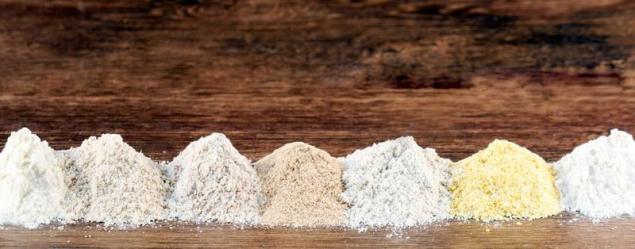
When Wallpaper grinding in the flour remain absolutely all the components of the grain. This floral sheath of grain, aleurone layer and germ of the grain. Sootvetstvenno, in wholemeal flour retains all the biological value of whole grains, and all of its healing qualities for the human body.
The flour is fine or coarse grinding.
Flour – whole grain flour. When rough grinding of almost all the grain is ground into flour, which consists of large particles, and contains a sheath of cells, bran (wheat of 2nd grade, Wallpaper).
Flour milling is a flour from the endosperm, i.e. the inner part of the grain. When fine grinding flour white, soft, composed of fine particles of grain, the outer layers are removed (wheat 1st grade, the highest grade). Contains mostly starch and gluten and contains almost no fiber.
The finer the grind and higher the grade of flour, the less it protein, and especially minerals, vitamins, and more starch.
As for terminology, grubroot grain is called meal, and the more finely ground the flour.
The flour obtained when one-time grinding can be called "whole grain" (as all parts (100%) whole grain: fruit and seed coat, embryo, endosperm particles and so remain in the flour). Until recently, however, she was more known as "forage" or "fodder".
It is worth noting that the flour is ground in a mortar, coffee grinder or mill grinding system in flour mill, will be very different among themselves, as they vary and their baking properties.published
P. S. And remember, only by changing their consumption — together we change the world! ©
Source: vk.com/topic-37554300_27844248
The finer the grind, the more "ballast substances" can be sifted.
The most "pure" in this sense, flour is a premium flour.

Fine grind allows you to filter out all "impurities", including the flower sheath and grain germ (vitamins, unsaturated fatty acids, minerals, etc.), including the fiber, leaving only the pure starch (carbohydrates).
The nutritional value of this flour (amount of calories) is really very high. But from the point of view of biological value of product is carbohydrate "dummy".
In such flour is nothing useful and necessary to the body. From carbohydrates it can't create new cells, he required all the variety of macro - and micronutrients inherent in the whole grain nature.
MODERN VARIETIES of FLOURtoday modern industry offers 5 varieties of wheat flour:
- krupchatka,
- flour,
- first grade flour,
- flour,
- Wallpaper
- seed
- flour.
Varieties of wheat flour differ from one another (the amount of flour obtained from 100 kg of grain), color, ash content, and various degrees of grind (particle size), the content of otrublennyh particles, amount of gluten.
According to the percentage yield of flour from the milling of grain flours is divided into:

- fine wheat flour 10% (it turns out only 10% of the total grain volume in 100 kg)
- high grade (25-30%),
- first grade (72%),
- second grade (85%) and
- Wallpaper (about 93-96%).

Krupchatka consists of homogeneous fine grains of a light cream color, which are particles of endosperm (Krupki) with size 0.3-0.4 mm, contains shells and soft powdery particles.
It is almost no bran. It is rich in gluten and has a high baking properties. Krupchatka is produced from special varieties of wheat and larger size of the individual particles.
This flour should be used for such products as cakes, pastries etc. For nesdobnoe dough krupchatka is unsuitable, as the dough from her ill-suited, and finished products have poor porosity and quickly get stale.
Flour consists of finely ground (0.1-0.2 mm) particles of endosperm, predominantly in the inner layers.
Semolina is different from the fact that when rubbed between your fingers does not feel gritty.
Its color is white with a slightly cream tint. Flour contains a very low percentage of gluten. The best category of the highest grade called "extra". Often used as a thickener in sauces, and is also suitable for muffins.
This type of flour is most common in the manufacture of high grade flour products. Wheat flour has good baking properties, the products made from it have good volume and a fine-developed porosity.
First grade flour — soft to the touch, finely ground, white with a slightly yellowish tint. First grade flour has a high gluten content, which makes the dough elastic of her, and the finished product — good shape, large size, sweet flavor and aroma.
First grade flour is good for nesdobnoe baking (buns, cakes, pancakes, fritters, frying, national types of noodles, etc.), and for baking a variety of breads. The finished product from it get stale slower.
Flour consists of crushed particles of endosperm and 8-12% of flour weight of crushed shells. Flour 2-nd class larger flour 1-St grade. The particle size 0,2-0,4 mm. the Color is noticeably darker due to the high content of peripheral parts of the grain — usually white with a yellowish or grayish tinge. Is white, with noticeable yellow or brown tint, containing up to 8% bran, it is much darker than first-class. Happens light and dark.
This flour is a better baking quality – pastries from it turns fluffy and spongy. Mainly used for baking of table varieties of white bread and unenriched starchy foods. Often it is mixed with rye flour. Use this flour in the manufacture of certain confectionery products (cakes and cookies).
Wholemeal flour (wheat flour) is produced by grinding whole grain.
The flour yield is 96%. Flour larger particles are less uniform in size.
Produced from all kinds of soft varieties of wheat, bran it is 2 times more than in the flour of the 2nd grade, color with a brown tint. In the wholemeal flour content of the particles otrublennyh the highest.
Their bakery svoistvam it is inferior high-quality wheat flour, but is characterized by a high nutritional value.
In the envelopes of the grain contains proteins, vitamins b and E, minerals calcium, phosphorus, iron, magnesium. - Grain is rich in starch and contains significantly less protein and other nutrients than its peripheral layers. Therefore, flour from whole grains or with added finely ground bran by its nutritional value is much superior to high-grade flour.
Wholemeal flour is mainly used for baking of table bread, and rarely used in cooking.
Wholemeal flour is the largest flour milling. Accordingly, sift wholemeal flour is produced through the sieve.

When Wallpaper grinding in the flour remain absolutely all the components of the grain. This floral sheath of grain, aleurone layer and germ of the grain. Sootvetstvenno, in wholemeal flour retains all the biological value of whole grains, and all of its healing qualities for the human body.
The flour is fine or coarse grinding.
Flour – whole grain flour. When rough grinding of almost all the grain is ground into flour, which consists of large particles, and contains a sheath of cells, bran (wheat of 2nd grade, Wallpaper).
Flour milling is a flour from the endosperm, i.e. the inner part of the grain. When fine grinding flour white, soft, composed of fine particles of grain, the outer layers are removed (wheat 1st grade, the highest grade). Contains mostly starch and gluten and contains almost no fiber.
The finer the grind and higher the grade of flour, the less it protein, and especially minerals, vitamins, and more starch.
As for terminology, grubroot grain is called meal, and the more finely ground the flour.
The flour obtained when one-time grinding can be called "whole grain" (as all parts (100%) whole grain: fruit and seed coat, embryo, endosperm particles and so remain in the flour). Until recently, however, she was more known as "forage" or "fodder".
It is worth noting that the flour is ground in a mortar, coffee grinder or mill grinding system in flour mill, will be very different among themselves, as they vary and their baking properties.published
P. S. And remember, only by changing their consumption — together we change the world! ©
Source: vk.com/topic-37554300_27844248

